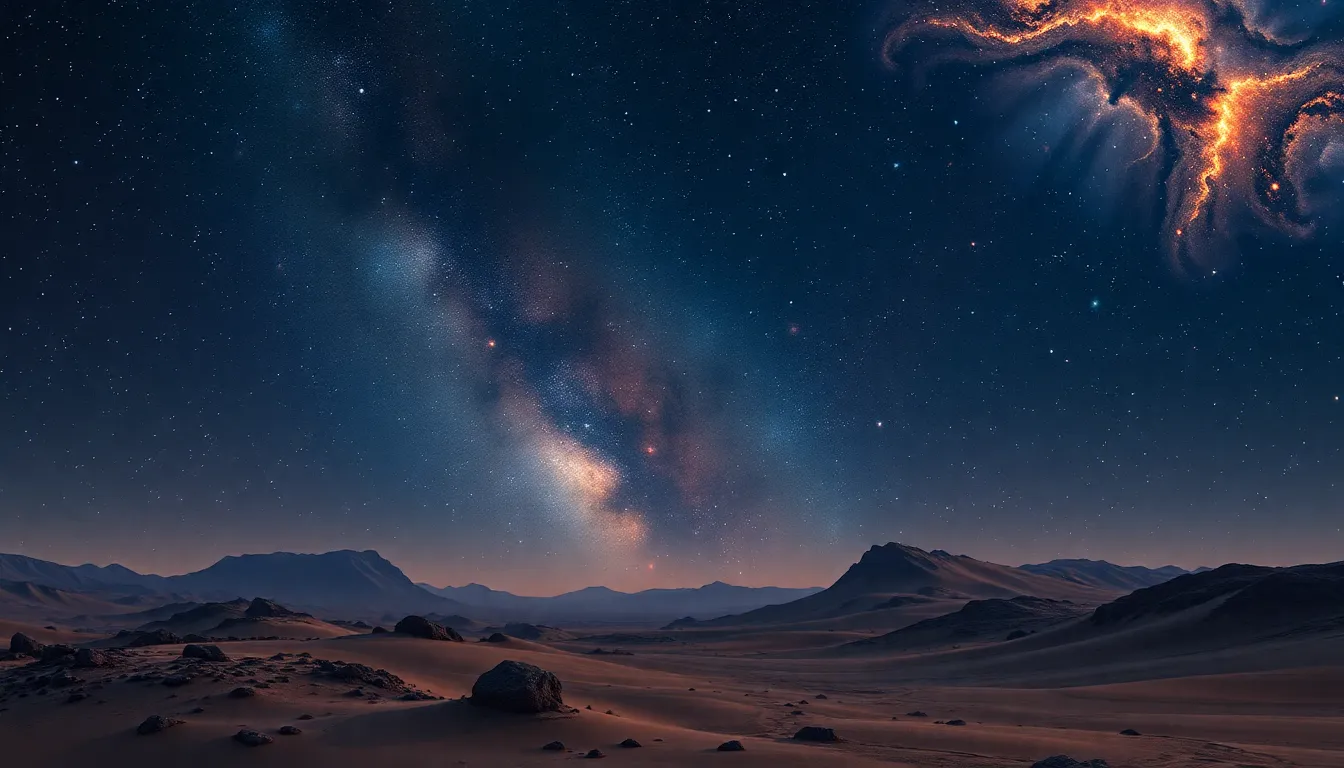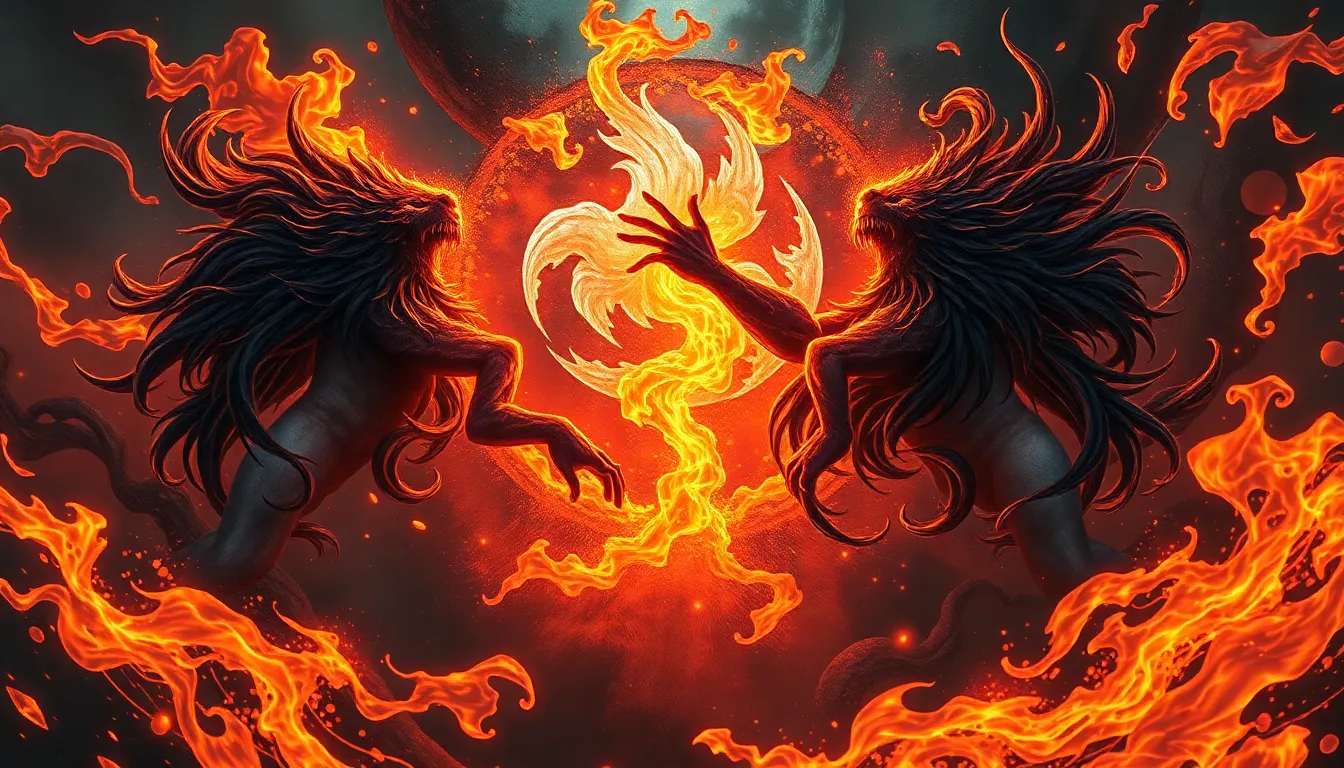Starry Legends: The Myths That Shaped Our Understanding of the Universe
I. Introduction
Myths have been an integral part of human culture since the dawn of civilization. They serve as narratives that explain natural phenomena, convey moral lessons, and reflect the values of the societies that create them. Among the many realms they touch, the night sky has captivated human imagination, leading to the creation of a wealth of myths that intertwine with astronomical phenomena. This article explores how these ancient myths have profoundly influenced our understanding of the universe, shaping not only our cultural heritage but also our scientific inquiry.
II. The Origins of Celestial Myths
From the earliest days of humanity, people have gazed at the night sky, observing the movements of stars, planets, and celestial events. The historical context of these observations reveals a deep connection between human life and the cosmos. As early humans sought to make sense of their environment, they developed stories and legends that explained their observations.
Across different cultures, celestial bodies were often personified as gods or mythological figures. The significance of constellations became apparent as they served practical purposes, such as:
- Navigation: Helping travelers find their way.
- Agriculture: Indicating seasonal changes for planting and harvesting.
- Religious Practices: Guiding rituals and calendars.
III. Greek Mythology and the Stars
Greek mythology has left an indelible mark on our understanding of the stars. Many of the constellations we recognize today have their origins in Greek myths. For instance:
- Orion: The mighty hunter, often depicted with his belt of three stars.
- Ursa Major: The Great Bear, linked to the myth of Callisto, a nymph transformed into a bear.
The impact of these myths extended into Western astronomy, where Greek philosophers such as Aristotle and Ptolemy integrated these narratives into their scientific frameworks. They used mythology not just to explain the stars but to form a foundational understanding of the cosmos that would influence future generations.
IV. Indigenous Star Stories
Various indigenous cultures around the world have their own rich traditions of star stories, which often reflect their unique environments and experiences. These stories serve as vital cultural touchstones, preserving knowledge and practices passed down through generations.
Examples of star myths from different cultures include:
- Native American: Many tribes view the stars as ancestors or animals, with stories that explain their place in the sky.
- Aboriginal Australian: The night sky is seen as a tapestry of stories, with constellations linked to creation myths and natural events.
- Polynesian: Navigation across the vast Pacific was guided by the stars, with myths that detail the significance of celestial bodies in finding land.
These myths not only served to explain celestial phenomena but were also essential in the realms of navigation and agriculture, providing practical knowledge rooted in cultural heritage.
V. Ancient Egyptian Astronomy and Mythology
The ancient Egyptians had a profound connection between their deities and celestial bodies. Gods such as Ra, associated with the sun, and Osiris, linked to the afterlife, were central to their cosmology. The construction of the pyramids was meticulously aligned with certain constellations, emphasizing the importance of the stars in their religious practices.
This integration of mythology and astronomy significantly influenced later astronomical practices, as the Egyptians developed one of the earliest calendars based on lunar and solar cycles, demonstrating a sophisticated understanding of celestial movements.
VI. The Influence of Eastern Myths on Astronomy
Eastern cultures have also contributed richly to our understanding of the stars through their myths and narratives. For example:
- Chinese Constellations: The Chinese developed their own system of constellations, with legends surrounding figures like the Cowherd and the Weaver Girl.
- Hindu Mythology: The Vedic texts describe celestial cycles and the significance of constellations in religious practices, linking the cosmos to the cycle of life and rebirth.
In these cultures, astronomy and astrology were often intertwined, reflecting a holistic view of the universe where celestial movements were believed to influence earthly events.
VII. The Renaissance: Bridging Myth and Science
The Renaissance marked a pivotal shift from mythological explanations of the cosmos to scientific inquiry. Key figures such as Copernicus and Galileo began to challenge traditional views, advocating for a heliocentric model of the solar system. Despite this shift, myths persisted, providing a narrative framework within which new discoveries could be contextualized.
These thinkers often referenced ancient myths, illustrating how the past continued to inform present understandings. This duality of myth and science enriched the discourse surrounding astronomy.
VIII. Modern Interpretations of Ancient Myths
In contemporary astronomy, there has been a resurgence of interest in mythology as a means to provide cultural context for scientific concepts. Myths can serve as powerful tools for science communication, helping to make complex astronomical ideas more accessible and relatable to the public.
Storytelling remains a critical element in how we convey scientific knowledge, often bridging the gap between ancient wisdom and modern understanding.
IX. The Lasting Legacy of Star Myths
The impact of celestial myths continues to resonate in modern culture and literature. Many celestial bodies and phenomena are named after mythological figures, reflecting the enduring legacy of these stories. The educational value of integrating myths into astronomy curricula is significant, as it fosters a deeper appreciation of both science and cultural history.
In conclusion, the myths surrounding the stars have shaped our understanding of the universe in profound ways. They illustrate the rich tapestry of human experience, linking our past to our present and guiding our future explorations of the cosmos.




